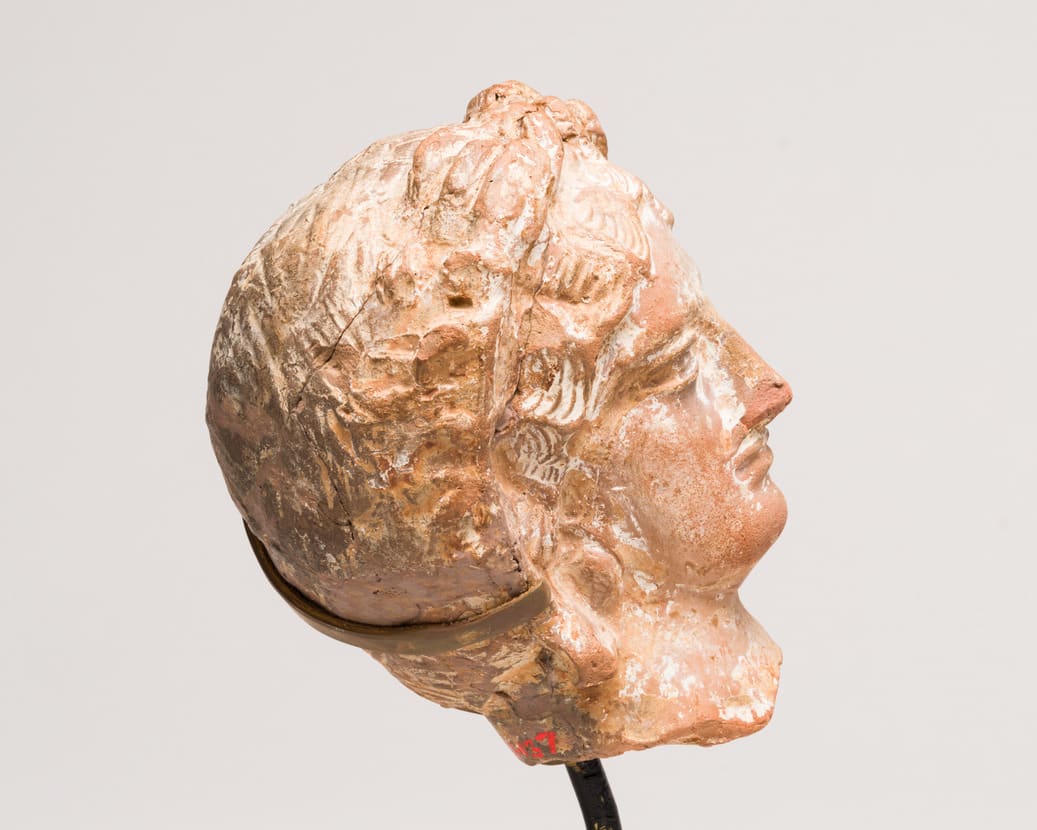
- Object Name:
- Female Votive Head
- Place Made:
- Eastern Mediterranean
- Date:
- 1st–2nd century CE
- Medium:
- Clay: mold-formed, slipped, and fired
- Dimensions:
- 4 7/16 × 3 5/8 × 4 in. (11.2 × 9.2 × 10.2 cm)
- Credit Line:
- Gift of the Betty and Max Ratner Collection
- Accession Number:
- 1981-137
On View
This head, although probably of Roman Period date, is imitative of earlier Hellenistic types. The figure is possibly wearing an ivy wreath, which connected with the Greek god Dionysus, whose cult becomes extremely popular in Late Hellenistic and Roman times in the eastern Mediterranean, even reaching as far as Iran. The style of hair and the treatment of the eyes are perhaps more characteristic of Roman work.
These terra cotta heads were meant as votive offerings at pagan temples, and numerous examples of Greek, Cypriot, and Roman figures and heads have been excavated in Israel. Many seem to be concentrated in favissae, pits outside sanctuaries where ritual objects no longer needed are buried. One such deposit was discovered at Tell Sippor on the coast; mineralogical, stylistic, and chronological analyses have suggested that the objects came from a possible Phoenician sanctuary on the site in the 6th to 4th centuries B.C.E. A whole room filled with Roman-style terra cotta heads (probably a shop) was found at Gerasa in Jordan. It is not clear who was purchasing these votive heads, but they were probably intended for non-Jewish sanctuaries.
These terra cotta heads were meant as votive offerings at pagan temples, and numerous examples of Greek, Cypriot, and Roman figures and heads have been excavated in Israel. Many seem to be concentrated in favissae, pits outside sanctuaries where ritual objects no longer needed are buried. One such deposit was discovered at Tell Sippor on the coast; mineralogical, stylistic, and chronological analyses have suggested that the objects came from a possible Phoenician sanctuary on the site in the 6th to 4th centuries B.C.E. A whole room filled with Roman-style terra cotta heads (probably a shop) was found at Gerasa in Jordan. It is not clear who was purchasing these votive heads, but they were probably intended for non-Jewish sanctuaries.
Information may change as a result of ongoing research.